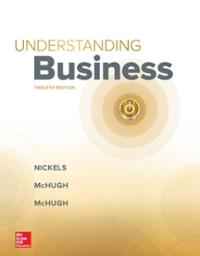

Assist with this .It is part of my assignment
Researcher 3 estimates: (3) In Ci = 1.32 + 1.38 In Yi - 0.1 1 K; + 0.28 E. + 631 (0.54) (6.56) (1.09) (1.10) Number of observations =1280 In all the above regressions, the numbers in brackets are absolute values of t-ratios. a) For each regression, discuss the effect of total monthly expenditure on cinema tickets expenditure. b) Researcher 3 claims to be able to reject the hypothesis that the income elasticity of spending on cinema tickets is equal to 1. Do you agree? Explain your reasoning. c) Which one of these three specifications provides evidence that the income elasticity depends on children? Find the income elasticity for those with and without children in this specification and in each case state whether cinema tickets are a necessity or a luxury. d) Why do all three researchers' specifications have different numbers of observations? Does this worry you or suggest that any of the specifications are better than any of the others? Explain your reasoning. Q2 150 MARKS]. Recent years have seen a fall in labour market participation of older workers. The following data are descriptive statistics from two random samples of individuals aged 50 to 64 in Amherst in year 2000 and year 2010. 50-59 60-64 All 50-64 Year: 2000 Working 6200 2022 8222 Not working 4500 2576 7076 All 10700 4598 5298 Year: 2010 Working 5850 1624 7474 Not working 3960 2608 6568 All 9810 4232 14042 a) For each year, compute simple estimates of the effect of reaching age 60-64 on whether an individual is employed. b) State the conditions under which you could interpret your answers to part (a) as causal effects. Do you think these conditions are likely to hold in this case? Would you consider the estimates in part (a) to be evidence that this 'effect' has changed over time? Explain your reasoning. 2c) In year 2012 the government introduced a new policy targeted at increasing employment amongst 60-64 year olds, by a combination of retraining programmes and wage subsidies. Suppose you have a sample of individuals aged 50 to 64 for the years 2011 and 2013. Propose a regression to implement the difference-in-differences estimator to evaluate the reform. Carefully explain what variables are needed in your regression and how you can use it to estimate the causal effect of the reform and the assumptions under which such an inference is valid. d) Suppose the same model in part (c) were estimated on workers of all ages, instead of just those aged 50-64. Are any of the assumptions you listed in part (c) more or less likely to hold? Explain your reasoning.Q1 [50 MARKS]. Three researchers are estimating the relationship between expenditure on cinema tickets (Ca) and total monthly expenditure (Y i) using a cross-sectional Survey of 1500 households in England during May 2014. All three have also been asked to look at the effect of children on cinema attendance and they have been given data on the number of children K in each household from which a dummy variable Di has been constructed taking the value 1 if Ka>0 and 0 otherwise. The variable E is the years of education of the head of household, and residuals for each of the three researchers' models are denoted 51'} 52"; 5;} respectively, i is the household identier. Researcher 1 estimates the following relationship: (Her 2 5.48 + 2.48 Ya- 0.25 Y? - 1.328 n+2\"; (1.24) (2.41) (2.16) (4.21) Number of observations = 1500 Researcher 2 estimates: (2) ln Cl: 1.22 + 0.72 Y1 - 0.38 Ya*Da - 0.42 n+6} (0.26) (5.13) (3.28) (2.72) Number of observations 2 1320











